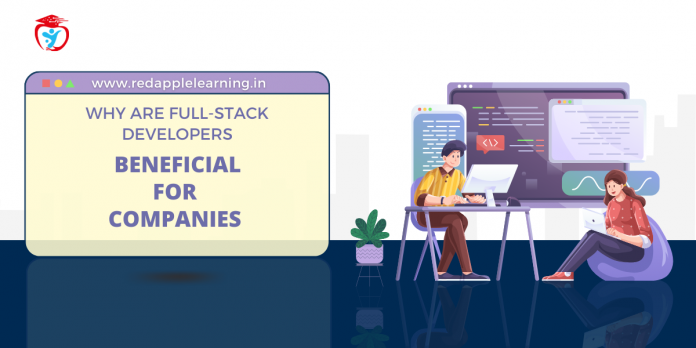The term full-stack, as it applies to development, generally refers to someone who is both a front-end and back-end developer. But what exactly does that mean? To elaborate, a front-end developer takes the information you type into your browser and renders it in a way that’s visually appealing. A back-end developer, on the other hand, deals with databases and web servers and is typically the one who provides you with information using querying languages like SQL or PHP, etc. Now, we will start with who exactly is a full-stack developer. And then we will be discussing their responsibilities and why these professionals are in demand.
Who is a Full-Stack Developer?
A full-stack developer is someone who knows how to do everything when it comes to putting together a web application. This means that they’re not just going to be working on the backend, but also the front end. Now, there’s some debate over just what makes up a full-stack developer, so let’s define it here: A full-stack developer is someone who knows how to build software from the ground up, including both backend development and frontend.
Typically the Responsibilities of a Full-Stack Developer Fall into two categories:
- The development of the front end.
- The development of the back end.
- Being a full-stack developer means understanding both, so you’re able to craft a cohesive product that reflects your vision while also making it user-friendly. For example, a packaging company responsible for producing dozens of different types of cereal may need a full-stack developer capable of ensuring that their product page is visually appealing and simple to navigate. But on the back end, this person will have to make sure that the website can handle orders and provide the server with necessary information when needed.
- With so many different aspects to consider, it’s important to choose a full-stack developer who truly understands all facets of the product they’re working on.
- As crucial as it is to have someone who is knowledgeable in both domains, they must also be able to hold themselves accountable if things aren’t working correctly or if they encounter any roadblocks in their development process.
- A full-stack developer will have to stay on top of all the different pieces of your product. While the front end may be in charge of what’s seen by the user, such as the look and feel and general layout of the website, there are still plenty of back-end tasks that need to be completed. These tasks range from properly preparing and updating a database to gathering information from a payment solution provider, as well as ensuring your admin interface is easy for customers to navigate.
- You can find a full-stack developer who will be able to handle every aspect of your product’s development process. However, it’s important to also find a developer who is willing to be helpful when something isn’t working correctly. A full-stack developer will understand the importance of a seamless experience for your customers. With this in mind, they will offer on-the-spot solutions to clients who need immediate assistance.
Why are Full-Stack Developers Beneficial for Companies?
Full-stack developers can actually be quite useful for companies, especially those that want to build web applications. First, full-stack developers are able to look at a company’s platform from a top-down perspective. Meaning that they should easily be able to identify where improvements need to be made. They’re also able to not only identify some of these problems. But they can actually address them as well and incorporate the solutions into their work on an ongoing basis. In short, full-stack developers can be beneficial when it comes to finding solutions both quickly and efficiently.
- There are benefits and drawbacks to hiring a full-stack developer, although the pros definitely outweigh the cons. For one thing, you won’t have to eat up all your time by having someone present at each coding session. So you can focus more fully on what needs to be done next. You may also see an increase in profits and a decrease in expenses, as time isn’t being spent on having to hire a front-end developer and a back-end developer. And if you’re working with a startup, it’s likely that all of your staff will be wearing multiple hats at some point anyway.
- On the other hand, a full-stack developer stakes all the responsibilities for creating proper websites. Hence they wear as many hats as possible.
- A full-stack developer will act as your eyes and ears on every step of your web design/web development process. They are passionate about staying abreast of technology trends. Not only will they stay updated on the latest design and coding tools, but they’ll also know which companies are offering the right kinds of services at a reasonable rate.
Also Read: Why is Unity 3D the Preferred Tool for Game Development?
How to Be a Full-Stack Developer?
It’s no secret that full-stack development is increasingly becoming something of a job requirement for many. Especially when it comes to the IT or software industry. So, how do you get into this profession? Well, if you’re already familiar with web development and want to transition into full-stack development. The best way you can transition is with the assistance of full-stack development courses. Due to its demand, numerous institutes are providing full stack development courses in Kolkata. These courses cover each and every aspect that is necessary to become a full-stack developer. For those aspirants who want to start their journey from the very beginning. They should consider taking offline courses as a way of getting their foot in the door.








